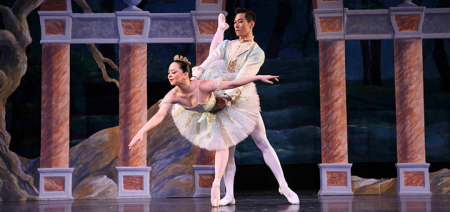Tilting At Windmills: The Brontë Award For Best Character – Part 2 … Heathcliff, Rebecca, Milady …
Published:
June 21st, 2024
By:
Shelly Reuben

I’m back with more recipients of the Brontë Award for Memorable Characters in a Novel. And since I named the award after those two scriblerus gals, it seems only appropriate to start with their handsome, bad-tempered heroes: the types of men who always have and always will cause women to cry bitter tears.
MR. ROCHESTER, by Charlotte Brontë. When first introduced in JANE EYRE, Mr. Rochester throws off his cloak, jumps off his horse, and imprints himself on Jane’s (and our) consciousness with a dash and flare that take our breath away “…with his broad and jetty eyebrows … his grim mouth, chin, and jaw—yes, all three were very grim, and no mistake … He was moody, too…But I believe that his moodiness, his harshness, and his former faults of morality…had their source in some cruel cross of fate.”
HEATHCLIFF, by Emily Brontë. Another passionate, brooding man, Heathcliff was the wild gypsy boy brought to WUTHERING HEIGHTS by Cathy Earnshaw’s father. From the moment they meet as children, Cathy and Heathcliff’s souls are welded together by a power greater than love. At age 19, Heathcliff “…had grown a tall, athletic, well-formed man … A half-civilized ferocity lurked yet in the depressed brows and eyes full of black fire, but it was subdued; and his manner was even dignified.”
MAXIMILIAN DE WINTER, by Daphne du Maurier, owns a beautiful country estate, Manderley, which is so enticingly described, it is almost a character in the novel itself. Although secretive and moody, Maxim is less forceful and certainly less sexy than Mr. Rochester and Heathcliff, but vital to the story as the man around whom two evil women revolve: “His face was arresting, sensitive, medieval … Could one but rob him of his English tweeds, and put him in black, with lace at his throat and wrists, he would stare down at us in our new world from a long distant past … of shimmering rapier blades, of silent, exquisite courtesy.”
Okay, on to the evil women in du Maurier’s riveting novel. First, we have Rebecca herself, Maximillian’s late wife. Then we have Mrs. Danvers, her pathologically devoted housekeeper.
REBECCA, as Mrs. Danvers describes her: “No one got the better of her, never, never … she cared for nothing and for no one … They made love to her, of course, who would not? … She did not mind, it was like a game to her.”
As described by Maxim de Winter: “You thought I loved Rebecca? … I hated her, I tell you, our marriage was a farce from the very first. She was vicious, damnable, rotten through and through … Rebecca was incapable of love, of tenderness, of decency. She was not even normal.”
MRS. DANVERS, too, was nasty piece of work: “Tall and gaunt, dressed in deep black, whose prominent cheek-bones and great, hollow eyes gave her a skull’s face, parchment-white, set on a skeleton’s frame.” For an exquisite sense of Mrs. Danvers’ malevolence, watch Judith Anderson’s portrayal of her in Alfred Hitchcock’s 1940 (flawless) movie.
Our third evil female for today is MILADY DE WINTER, created by Alexander Dumas for THE THREE MUSKETEERS (note that Rebecca and Milady both have the same last name): Spy. Seductress. Liar. Thief. Beautiful, shrewd, manipulative, and completely without a conscience, she is the classic – and possibly the first – femme fatale.
Leaving wicked women behind, we’ll move on to SYDNEY CARTON, Charles Dickens’ cynical but honorable drunk in A TALE OF TWO CITIES. Hopelessly in love with Lucie Manette, whose husband is about to be executed, he switches places with the accused. As he mounts the steps to the guillotine, Sydney Carton’s last words are quoted more often than any others when the speaker is about to embark upon a noble, but ultimately tragic, course of action: “It is a far, far better thing that I do, than I have ever done; it is a far, far better rest that I go to than I have ever known.”
Alexander Dumas gets a second Brontë Award (the first was for Milady de Winter) to honor his immortal, unforgettable, oft read and quoted hero, THE COUNT OF MONTE CRISTO. But before I get started, first two favorite passages from the novel (which was made into at least 31 movies):
“I, who have also been betrayed, assassinated and cast into a tomb, I have emerged from that tomb by the grace of God and I owe it to God to take my revenge. He has sent me for that purpose.”
“All human wisdom is contained in these two words – Wait and Hope.”
After escaping from a dungeon at the horrific Château d’If … but before taking his revenge on those who falsely accused him of treason, the Count of Monte Cristo “looks more like a corpse permitted by some friendly grave-digger to quit his tomb for a while, and revisit this earth of ours … coal black hair, large bright, glittering eyes, in which a wild, unearthly fire seems burning.”
Our last Dumas heroine, but this by Alexander Dumas fils – the illegitimate son of the man who wrote THE THREE MUSKETEERS and THE COUNT OF MONTE CRISTO - is CAMILLE (Marguerite Gautier) from the novel THE LADY OF THE CAMELLIAS.
Camille is a courtesan so enchanting that, despite her ill-health, she is adored, desired, and subsidized by any man at whom she flutters an eyelash. None, however, mean anything to her until she meets Armand. Although he is presented as a tragic lover, I think Armand was a jerk. But Camille nobly refuses to allow him to rescue her at the expense of his reputation, proclaiming: “Go back to your father, and to your sister, and there, by the side of a pure young girl, ignorant of all our miseries, you will soon forget what you would have suffered through that lost creature who is called Margerite Gautier, whom you had loved for an instant, and who owes to you the only happy moments of a life which, she hopes, will not be very long now.”
Yes. Yes. I know that sounds intolerably melodramatic, but it works in the context of the story, and as performed by Greta Garbo in the marvelous 1936 movie, your heart will break for Camille, too.
Before I move into more recent centuries, I must mention a character who has, perhaps, as much charm, cunning, courage, and passion as the most Romantic hero, but pretends to be a supercilious fop. I speak, of course, of THE SCARLET PIMPERNEL by Baroness Orczy -- the Englishman who, during the French Revolution, has set himself the task of rescuing innocent nobles from the guillotine. Quick description by one of his admirers, then I’ll let you go.
’The Scarlet Pimpernel? … Why. what a droll name! What is the Scarlet Pimpernel, Monsieur?’
“‘The Scarlet Pimpernel, Mademoiselle … is the name of a humble English wayside flower; but it is also the name chosen to hide the identity of the best and bravest man in all the world, so that he may better succeed in accomplishing the noble task he has set himself to do.’”
So, put THAT in your pipe and smoke it.
See you next week!
Copyright © Shelly Reuben, 2024. Shelly Reuben’s books have been nominated for Edgar, Prometheus, and Falcon awards. For more about her writing, visit www.shellyreuben.com
Author: Shelly Reuben - More From This Author
Comments






